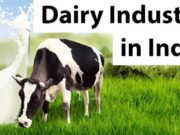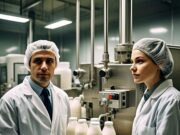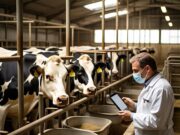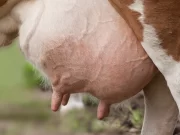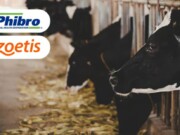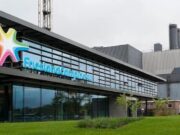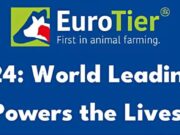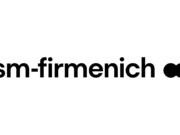
The reproductive performance of an animal primarily depends upon the genetic makeup of animals together with appropriate husbandry practices, in order to ensure that the intervals from calving to conception are short and rates of conception to breeding are high resulting in higher milk production and a maximum number of progenies per elite animal. Under field conditions, in spite of many efforts, the conception rate ranges between 35-50% following artificial insemination indicating greater loss of embryos during various developmental stages.
The establishment and maintenance of pregnancy is a highly complicated process involving the embryo, uterus, and cow. In cows, fertilization rates are generally reported to be close to 90 percent while average calving rates fall within 50-60 %. Thus, embryonic and fetal deaths account for about 75% of all reproductive wastage, following single breeding. Early embryonic death within 20 days of fertilization would seem to account for about 75 to 80 percent of all embryonic and fetal deaths and results in a substantial loss in production. The greatest loss occurring between day 8 and day 18 after fertilization. Of the remaining loss, most estimates in the literature suggest that about 10 to 15 percent occurs at or near the time of implantation and 5 to 8 percent between implantation and full term. As most of the losses occur on or probably before day 18, the normal sequence of events in the luteolytic process results in a dramatic decrease in progesterone level, removing its negative feedback influence and allowing follicular growth, estrus, and ovulation to occur. Thus, providing another chance to become pregnant but in most cases, it becomes difficult to ascertain the specific reason resulting in failure. There are many strategies that can be followed to improve conception rates under field conditions when the causes of failure are uncertain.
Nutritional requirements and reproductive efficiency:
Energy and protein:
There is a very close interrelationship between the nutritional status of animals and reproductive performance. Different physiological stages and processes need different levels of nutrients in the diet. These include the period of rapid growth during puberty, parturition, and peak lactation which also correspond to the time to rebreed the following calving. Peak production time is the time when it is very difficult to meet the nutrient requirements of the dairy cows and to improve on her for fertile estrus and conception. If the heifers are well fed, usually they start sexual rhythm/cyclicity at about 10-12 months and conceives at about 16 months of age. About 11-12% of crude protein is required to sustain adequate rumen ammonia levels for normal rumen fermentation, digestion, and dry matter intakes. Výhra velkého jackpotu ve hře Plinko game je skutečná. These levels are adequate for normal function in heifers, bulls, and dry cows. Higher protein levels should be fed for growth and lactation. Mineral and vitamins should also be supplemented for continued reproduction.
Feeding propylene glycol:
Propylene glycol (PG), derived from propylene. It is frequently used as an oral drench in order to increase propionate in the treatment of ketosis in postpartum dairy cows. Propylene glycol linearly increased glucose and insulin.
Feeding whole flax seed:
Inclusion of whole flax seed in the diet of cattle has been observed to decrease embryo mortality that conceived within 120 days after calving. Plasma progesterone concentration between days 17-21 were greater for cows fed whole flax seed than other feed additives.
Water:
Water is essential for the transport of nutrients, normal digestion, and assimilation of nutrients as 45-60% of body weight is due to water. It is also compulsory to regulate the body temperature and excretion of waste material from the body. Generally, an adult cow consumes 35-55 liters of water per day. Fresh and clean water should be ensured 24 hours to the animals for better production and reproduction.
Health and vaccinations:
Timely vaccination against major infectious diseases should be followed since calf hood to adult stage and should be followed strictly for their booster doses. Deworming schedule for internal parasites should be followed regularly for the normal development and good reproductive efficiency.
Accurate detection of heat:
Inaccurate heat detection occurs when cattle are inseminated but are not in true estrus thus, resulting in a poor conception rate. Viable sperm should be present at the fertilization site before the egg arrives. Breeding either too early or too late allows an aged sperm or an aged egg to interact at the site of fertilization and will result in poor conception.
Insemination site in estrous female:
The target for semen deposition is the uterine body, accurate tip placement is probably the most important skill involved in the whole Al technique. Inseminators generally identify this target area by feeling the end of the cervix and the tip of the gun as the gun emerges through the internal os or opening. Depositing the semen in the uterine horns may result in lower conception rates.
Conception in bovines:
Experiment on cows has shown that 10 seconds of manual clitoral massage following artificial insemination hastened ovulation by 4.3 hours compared to females that did not receive clitoral massage and a higher conception rate was shown in stimulated females (75%) compared to non-stimulated females (67.45%).
Gonadotropin-releasing hormone (GnRH) and its analogues cause an acute secretion of luteinizing hormone (LH) and follicle-stimulating hormone (FSH) such that concentrations in peripheral blood are elevated for a 3-5 h period. GnRH-induced alterations in the function of the corpus luteum (CL) or follicle appear to be indirect through alterations in LH and FSH secretion. Repeated injections of regression, of GnRH during diestrus or single injections late in diestrus will cause acute increases in plasma progesterone and a delay in CL regression. Injections or continual administration of GnRH during early phases of CL development appear to augment CL differentiation and alter subsequent CL function. These effects are attributable to an induced increase in LH. Gonadotropin-releasing hormone (GnRH0 and its analogues cause an acute secretion of luteinizing hormone and follicle-stimulating hormone (FSH) such that concentration in the peripheral blood are elevated for a 3-5 hour period. GnRH-induced alterations in the function of the corpus luteum (CL) or follicle appear to be indirect through alterations in LH and FSH secretion. Repeated injections of GnRH during diestrus or single injections late in diestrus will cause acute increases in plasma progesterone and a delay in CL regression. Injections or continual administration of GnRH during early phases of CL development appear to augment CL differentiation and alter subsequent CL function. These effects are attributable to induced increases in LH
GnRH post-breeding:
The use of GnRH analogue buserelin administered in mid diestrus has been shown to increase early pregnancy rate, reduce embryo loss and increase litter size in several species.
Dextrose
Administration of dextrose 20% @500 ml i/v 2 hours before insemination of the animal in repeat breeders has also been observed that it improves the pregnancy rate in bovines.
Oxytocin
Conception failure in bovines may results due to atony of the uterus during the estrous cycle as it helps in transport or gametes. It has been in practice in such cases that the administration of 25-30 1U IM post-breeding helps in improving conception.
High environmental temperature stress and its management.
The high environmental temperature may have an adverse effect directly on the survival of gametes (egg/sperm) or the developing embryo may die, resulting in early embryonic mortality. The conception rate may fall below 20% during the summer months, often fertility will not return to normal until late October or November. It is recommended to increase the energy of feed to account for reduced intake during hot weather, providing shade over the feeding and watering area is another way to increase feed intake by heat-stressed cows.



Mohit Mahajan1
Mohit Mahajan1, Shiv Prasad2 and Mohit Bharadwaj3
1PhD Scholar, Department of Veterinary Gynaecology and Obstetrics, College of Veterinary and Animal Sciences, GBPUAT, Pantnagar, Uttarakhand 263145
2Professor, Department of Veterinary Gynaecology and Obstetrics, College of Veterinary and Animal Sciences, GBPUAT, Pantnagar, Uttarakhand 263145
3PhD Scholar, Department of Animal Nutrition, College of Veterinary and Animal Sciences, GBPUAT, Pantnagar, Uttarakhand 263145
Corresponding author- mohitmahajan108@gmail.com
